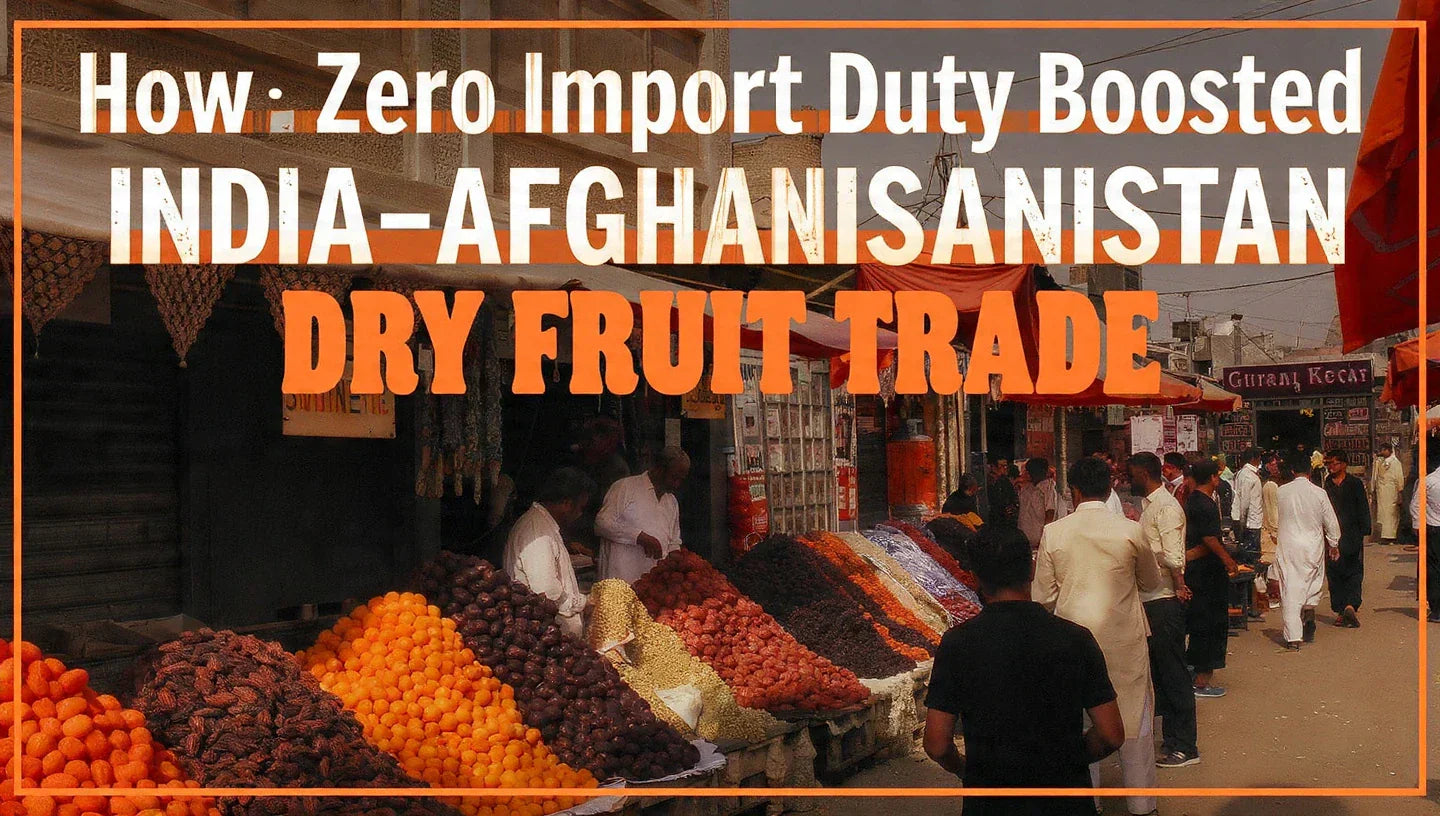How Zero Import Duty Boosted India–Afghanistan Dry Fruit Trade: A Simple Guide for New Importers
Breakfast feels different when you know the almonds, pistachios, dry raisins, walnuts, dates, and even that soft, chewy anjeer on your plate travelled all the way from Afghanistan. 🍇🥜
And here’s the cool part: the trade of Afghan dry fruits into India has surged massively in the last few months — especially after the visit of Afghanistan’s Foreign Minister, Mr. Amir Khan, to India in October.
Since then, thousands of containers carrying Afghan dry fruits enter India every single day. And the main reason is a big one…
🥜 Why Are Afghan Dry Fruits Cheaper in India? Because of Zero Import Duty!
Yes — shunya duty.
Zero. Nada.
This is possible because of #SAFTA — the South Asia Free Trade Agreement, a regional trade pact between a few South Asian countries:
-
India
-
Nepal
-
Bhutan
-
Sri Lanka
-
Bangladesh
-
Maldives
-
Pakistan
-
Afghanistan
Among these, Afghanistan is classified as an LDC (Least Developed Country) under #SAFTA.
And to support LDC economies, India grants 0% import duty on major Afghan goods — especially dry fruits.
So when you see affordable Afghan:
-
#almonds
-
#pistachios
-
#dryraisins
-
#walnuts
-
#dates
-
#anjeer
…just know it’s thanks to this free-trade window.

🚚 Why Imports from Afghanistan Jumped After October
After the diplomatic engagement in October, the trade channels reopened strongly.
Importers gained more confidence, logistics routes stabilized, and customs clearances became smoother.
Now, daily container movement runs into the thousands, especially through major Indian dry-fruit hubs like:
-
Khari Baoli (Delhi)
-
APMC Markets
-
Navi Mumbai
-
Chennai
-
Kolkata port
Better relations = better business. Simple.

🌍 How SAFTA Actually Helps Importers: The Simple Version
If you're new to import, SAFTA may sound fancy, but think of it like a small neighbourhood kitty party between countries. 😄
Everyone agrees:
👉 “Let’s trade freely.”
👉 “Let’s reduce duties.”
👉 “Let’s support countries that need more growth.”
Because Afghanistan is an LDC under SAFTA, India removes import duty on many Afghan-origin goods.
This means:
-
Lower landed cost
-
Higher profit margins
-
Faster selling in Indian markets
-
Better competitiveness vs local dry fruit suppliers
For new importers, this is a massive advantage. #importbusiness #taxbenefits

🧾 Where Most Importers Sell After Clearing Afghan Dry Fruits
Once the shipment lands and gets customs clearance, importers usually distribute to:
-
Khari Baoli (Delhi) – India’s largest dry fruit market
-
APMCs in major cities
-
Wholesale mandis
-
Online sellers stacking inventory for Diwali & festive seasons
-
Retail chains and premium organic stores
If you already have strong buying channels, this niche can be very profitable due to high demand and year-round consumption.
#dryfruitimports #wholesalebusiness

🛃 How Shunyatax Global Helps Importers Reduce Cost, Time & Risk
Importing dry fruits might sound simple, but getting stuck at customs can burn days and lots of money.
We help with:
-
Fast & smooth customs clearance
-
Ensuring SAFTA benefits are actually applied
-
Avoiding penalties or unnecessary duty
-
Document accuracy
-
Reducing risk attached to your IEC (Import Export Code)
-
Finding the lowest-cost compliance route
-
End-to-end support from port to mandi
If you're planning to enter the Afghan dry fruit trade, getting your compliance airtight is the real game-changer.

🧾 Shunyatax Global says that financial clarity starts with informed decisions.
auditing, bookkeeping services, and business setup in Dubai for individuals and businesses.
- How to identify fake products in Dubai & India
- How to Start Coaching Institute in Dubai
- Difference between Accounting and Bookkeeping in India
- Estate Planning in Dubai
🚀 Start your journey with us today:
👉 📞 Book a Consultation: Shunyatax Global: 1-1 Confidential Advisory
👉 🌐 Visit Our Website: Shunyatax Global Services
👉 📧 Email Us: urgent@shunyatax.in


Share:
How the U.S. Is Re-Entering Central Asia Through C5+1
Why Federalism Could Backfire in Syria’s Reconstruction Era